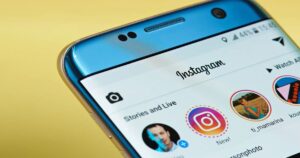An SRS, or Supplemental Restraint System, is an important safety feature in a car. It is designed to protect passengers in the event of a collision. It is a type of airbag system that works in conjunction with seat belts. The other safety features reduce the risk of serious injury or death in a crash.
Imagine driving down the road, and another car swerves into your lane, causing a collision. What is srs in a car? Without an SRS, the impact could be catastrophic. It can cause severe injuries or even fatalities. However, with an SRS in place, the airbags deploy almost instantly. It cushions the impact and protects the driver and passengers from harm.
If you own a car, you must ensure its SRS is functioning correctly. Regular maintenance can help identify issues before they become safety hazards. Inspections can help fix those issues. By taking this simple step, you can help keep yourself and your passengers safe on the road. In this article, we will discuss what SRS is, how it works, and its importance in a car.
Understanding the Concept of SRS
The Supplemental Restraint System, or SRS, is a safety system in a car. It provides an extra layer of protection to the occupants during a collision. The SRS helps airbags pop out during a crash. This stops people from hitting hard parts inside the car, like the dashboard. SRS is a passive safety system that operates automatically. The designers have designed it to work with the car’s seat belts.
How SRS Works in a Car
Designers created SRS to detect the severity of the impact and deploy the airbags accordingly. Various sensors located in different parts of the car comprise the system. These sensors can detect sudden changes in speed and deceleration. It can indicate a collision. The car’s electronic control module (ECM) receives the information from these sensors. It then triggers the deployment of the airbags.
The SRS system can deploy airbags in different ways, depending on the type of accident. Airbags in the steering wheel and dashboard deploy in a frontal collision. They protect the driver and front passenger. In a side impact, the side airbags deploy to protect the occupants from hitting the doors or windows. In a rollover, the roof-mounted airbags deploy to protect the occupants’ heads.
Components of SRS in a Car
The SRS system in a car comprises several components. They work together to protect the occupants. Some of the primary components of the SRS system include:
Airbags
The airbags are the most crucial component of the SRS system. The thin, flexible material can inflate in the event of an accident.
Sensors
Different parts of the car contain the sensors. It can detect sudden changes in speed and deceleration.
Electronic Control Module (ECM)
The ECM receives information from the sensors and determines the severity of the impact. It then triggers the deployment of the airbags.
Crash Sensors
The crash sensors located in the front of the car can detect the severity of a frontal collision. They make the airbags in the steering wheel and dashboard activate.
Seatbelt Pretensioners
The seatbelt pre-tensioners are responsible for tightening the seatbelts. It keeps the occupants in place during an accident.
Importance of SRS in a Car
What is srs in a car? The SRS system is a critical safety feature in a car. It can save lives and prevent severe injuries in a crash. According to the National Highway Traffic Safety Administration (NHTSA), airbags have saved more than 50,000 lives since their introduction in the 1980s.
The designers have designed the SRS system to work with the car’s seat belts. It provides the most protection to the occupants. You Need to note that the SRS system is not a substitute for seat belts. Drivers should always wear seat belts while driving.
Types of SRS in a Car
A car has two primary types of SRS systems: the driver’s SRS and the passenger’s SRS. The steering wheel and dashboard contain the driver’s SRS. The designers have designed it to protect the driver in the event of an accident. The front passenger seat contains the SRS of the passenger, which is designed to protect them.
Another type of SRS system is the side airbags. In the event of a side impact, side airbags protect the occupants by design. There are two types of side airbags: torso airbags and curtain airbags. The seat contains torso airbags that protect the occupants’ chest and abdomen. The roof contains and deploys curtain airbags that safeguard the occupants’ heads.
Maintenance of SRS in a Car
The SRS system in a car is designed to work automatically and does not need any maintenance. Regular inspections are necessary to check if the system works well. A qualified technician should check the SRS system every ten years, even if the car has yet to be driven much. The SRS system should also be inspected if the car has been involved in an accident.
Common SRS Issues and Troubleshooting

The SRS system in a car is complex and can develop issues over time. Some common issues with the SRS system include faulty sensors, damaged airbags, and wiring issues. The illumination of the SRS light on the dashboard indicates that the SRS system has a problem. In such cases, you need to take the car to a qualified technician to diagnose and fix the problem.
Safety Considerations for SRS in a Car
While the SRS system is a vital safety feature in a car, you must understand that it is not foolproof. The system can only do so much to protect the occupants in an accident. You must be safer when driving. Wear a seatbelt, drive defensively, and follow traffic rules. Regular inspections and maintenance are important to ensure the SRS system works correctly.
Future of SRS in the Automotive Industry
The SRS system has come a long way since its introduction in the 1980s. The system has evolved to become more sophisticated. It can now detect the type of accident and deploy airbags accordingly. The future of the SRS system looks promising. Car manufacturers are investing in developing advanced safety features.
There are some of the latest advancements in the SRS system. It includes the use of radar and camera sensors to detect potential accidents. Also, include the development of autonomous emergency braking systems.
The SRS system is a critical safety feature in a car. It provides an extra layer of protection to the occupants in an accident. The system comprises several components that work together. It also provides the most protection to the occupants. Regular inspections and maintenance are essential. This ensures that the system is working correctly.
Conclusion
The SRS system is an important safety feature in your car. What is srs in a car? It protects you and your passengers in the event of a collision. It works by using sensors to detect a collision and deploying airbags. It provides a cushion between the passenger and the hard surfaces of the car.
There are several different types of SRS systems. They are commonly used in cars today. It includes frontal, side, curtain, and knee airbags. Designers created each system to protect different types of collisions.The SRS system needs to be maintained as recommended by the manufacturer. This helps ensure that the system is working properly. If the vehicle’s SRS warning light illuminates or if the airbags deploy. It is important to have the system checked by a qualified mechanic.






